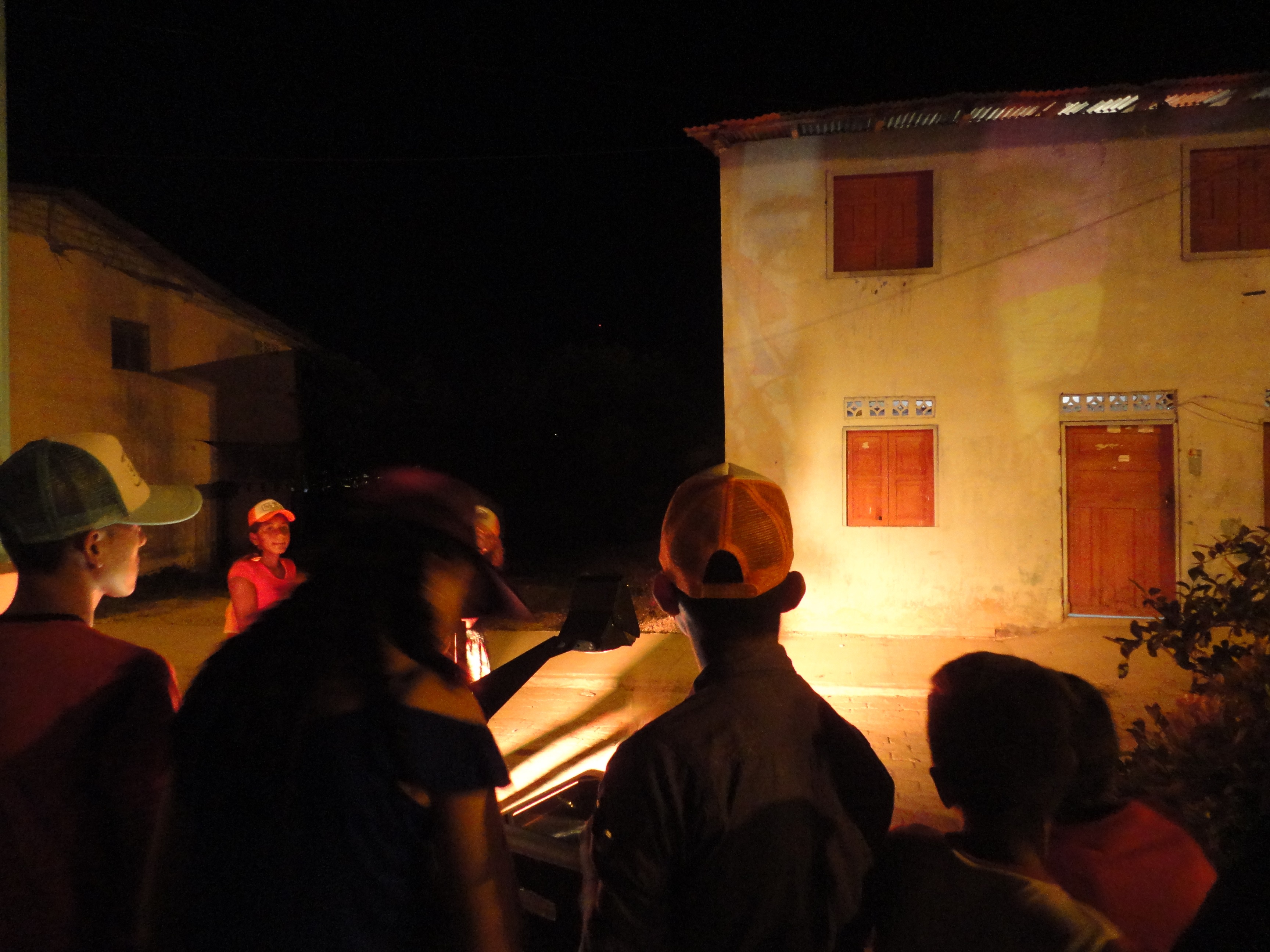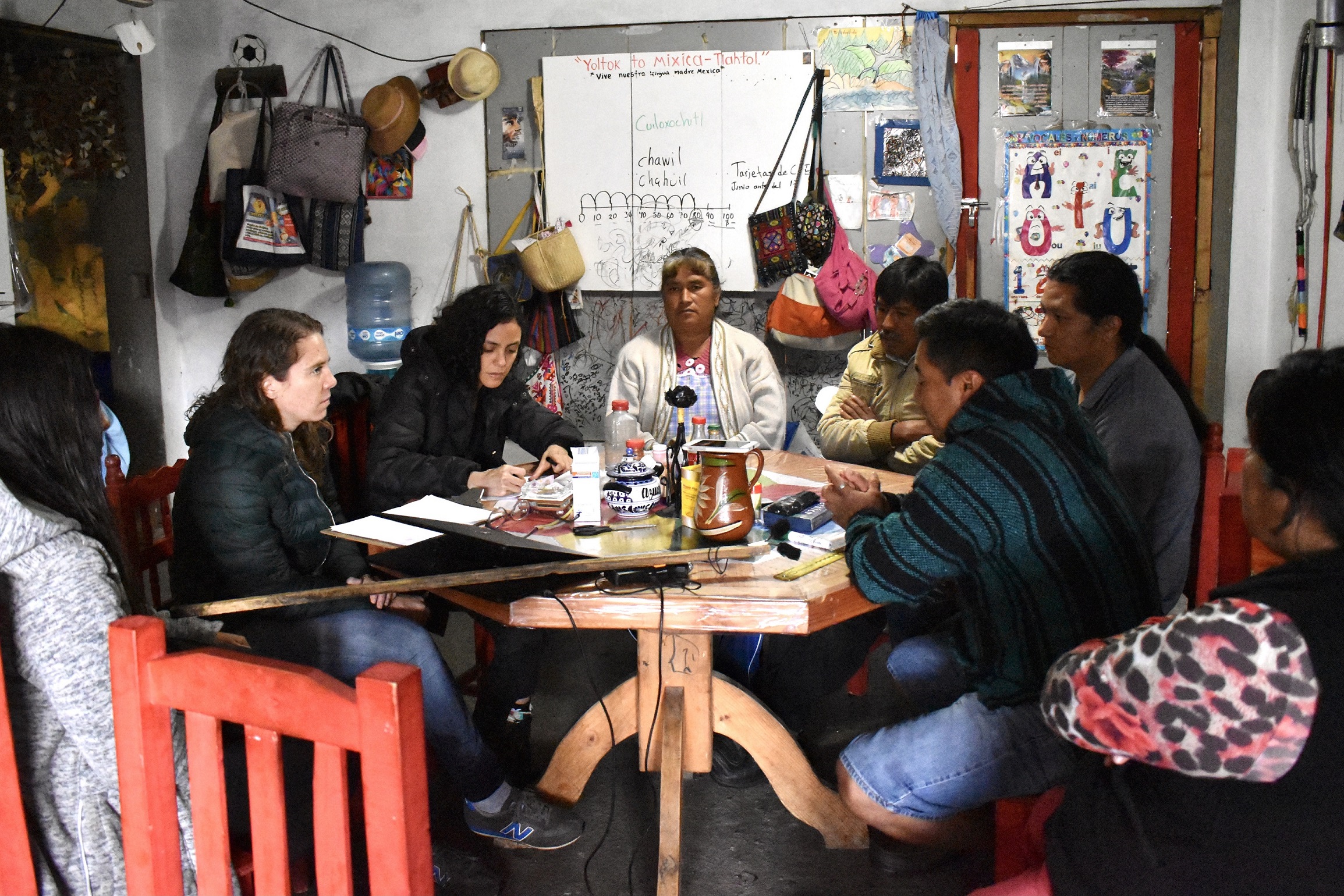Anamaría Garzón Mantilla: What is Tawna and how did it begin?
Creating Narrative Ruptures to Re-signify
TAWNA is a multicultural cinema organization with a focus on native Amazonian narratives. It is a collective initiative that intends to make visible the processes of defense of indigenous territories, strengthen the Amazonian cultural legacies, and offer formative accompaniment to the Amazonian youth interested in learning audiovisual communication.
Composed of filmmakers, visual artists, and communicators from various Amazonian, Andean, and mestizo cultures, TAWNA seeks to connect audiovisual narratives from the socio-cultural, environmental, and dream worlds.
Miguel Imbaquingo: Tawna is a multicultural collective born in the Ecuadorian Amazon, in the Sapara Nation. In 2018, the Sapara communicator Yanda Montahuano was researching and trying to tell his story in an audiovisual way, which led to Vestimenta Sapara, his first documentary, which is the first step of this project called Tawna. Over time, Tawna has added new Sapara companions such as Sani Montahuano and myself, as well as mestizos like Bolo Miranda, Lu Viarruel which has allowed us to have different perspectives on filmmaking. Tawna was also born out of the need to make visible the processes of resistance in the territory, the collective processes that take place in the jungle, as well as the anxiety to appropriate these audiovisual tools to be able to represent ourselves through image and sound.
We believe that it is very important to tell our own stories in order to make ourselves visible as peoples and also as subjects in this society, and not just to be seen as ethnographic objects, as happened a lot in the cinema in the eighties and nineties.
AMGM: What does Tawna mean?
MI: Tawna is a Quechua word that in Spanish could be like a paddle, a support. When you go in a canoe, tawna is the stick that helps move the canoe, but it is also the little stick that you use to walk; it is a support for us.
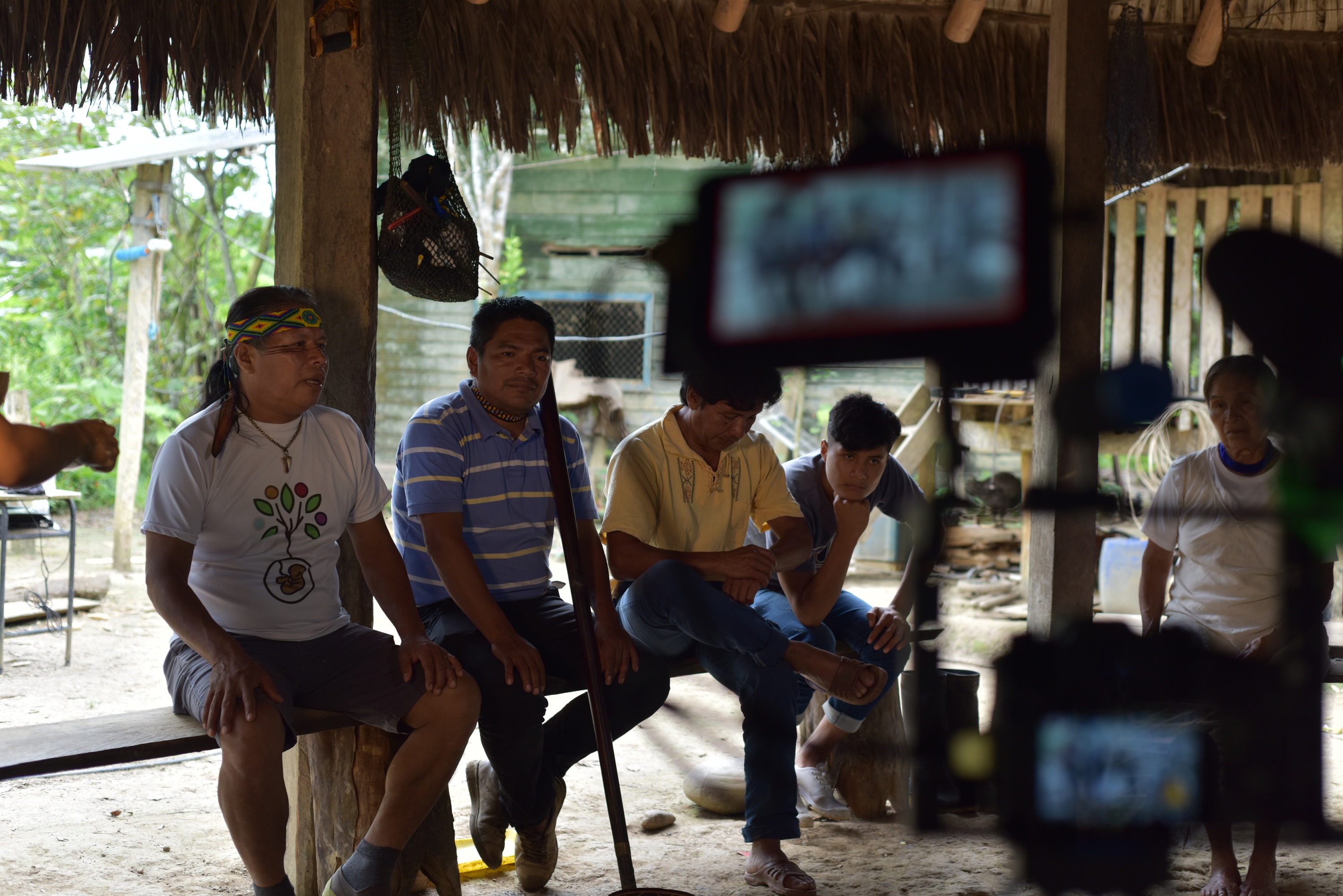

AMGM: Starting from Vestimenta Sapara and thinking about the films you have made, what was it like for you to create your own narrative, to make multicultural cinema?
MI: 'Tawna, cine desde el territorio' is the full name of the project. We used the word 'territory' because Yanda is critical of the word 'community,' because it is a form of Spanish colonization, because they created these communities in order to delimit and subdue us, to manipulate us. We also didn't want to say 'community' because we have critical points of view about community-based cinema. So we used the word 'territory' instead, because it is very broad: it is any space we enter or live in.
We are trying to put our difference into practice, and that is also the origin of this search for our own narratives or ways of making films, which we are still exploring and experimenting with. I think you have to master traditional cinema to be able to make breaks. That is why the first works, like Vestimenta Sapara, are quite political or cultural documentaries that talk about the need to protect the reality of Sapara, so we use traditional patterns of filmmaking, but as the works progressed, we looked for ways to make small breaks or put our own points of view.
We experimented with sound, sequential shots, time... Here we deal with time in a different way, and one day would seem like two or three, so it's about conveying that through photography, so that whoever is looking at it can feel there, or be bored, or have fun looking at this photograph. As filmmakers of the peoples and nationalities of the Amazon, we believe that we have to look for our particularities in other ways, without romanticizing our own culture so much.
The first workshop
AMGM: When you started teaching, did you have a defined methodology? What were the first workshops like?
MI: I think the first workshop was in Moretecocha. We learned a lot of pedagogy through practice. I think that practice is very important, as well as resignifying the use of terms, because the communities are not attached to the theoretical, they get bored, so it has implied the resignification of technical and narrative terms: for example, the "general plane" is like the "falcon plane" translated into Quechua. We were developing methodologies to give them small elements that they could identify with and thus assimilate. But it was also very graphic, we always worked a lot with images, with films of referents, of ourselves or of peoples of other nationalities who also fought, such as Peru, Brazil, Colombia.
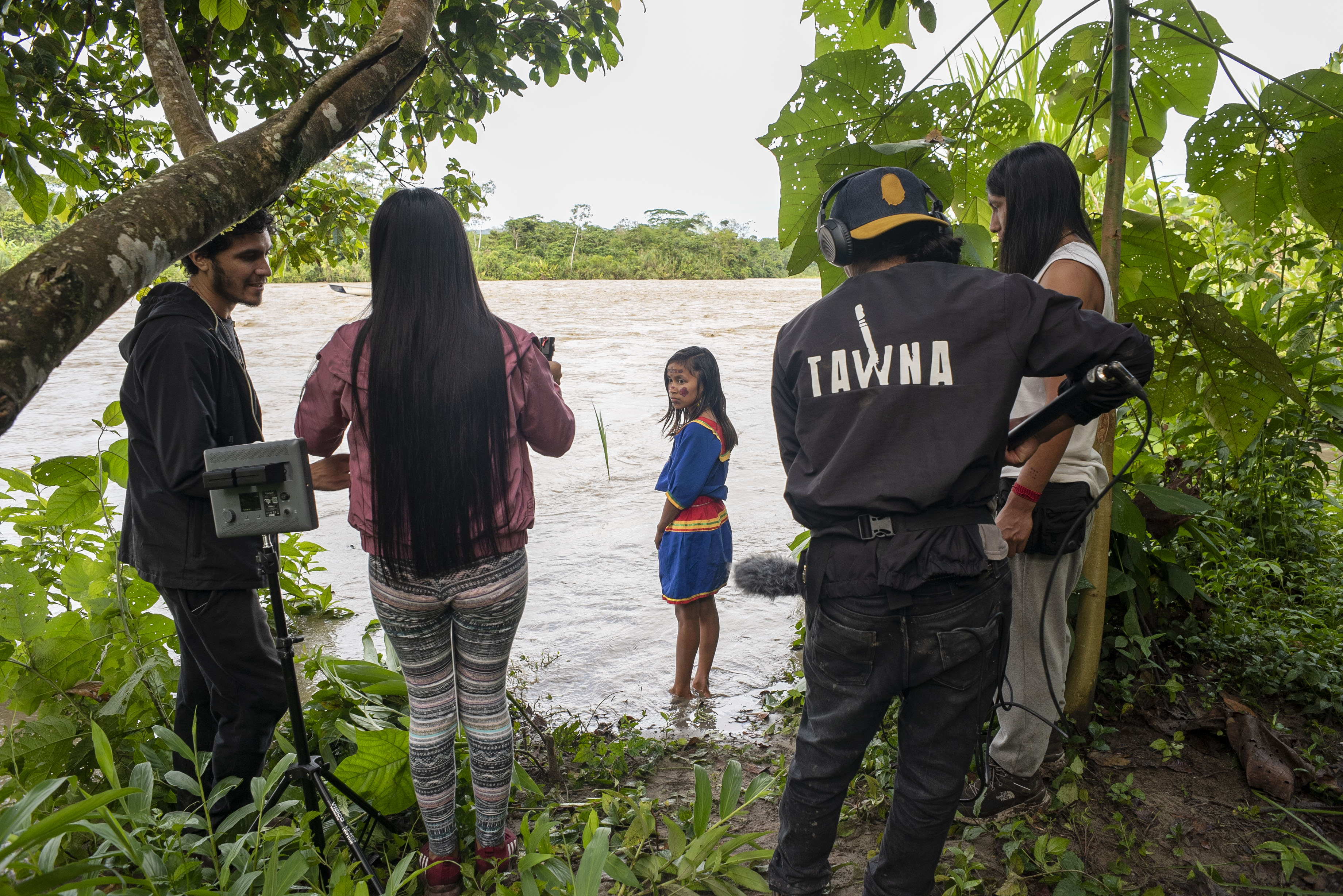
AMGM: And how do you determine the topics to be studied or filmed in these workshops?
MI: Well, Cinema in the Territory, which is like our motto, was born with the focus on the defense of the territory and the strengthening of the oral heritage, which is very vulnerable due to issues such as the fact that the grandparents have lost space in the communities, now we are very attached to technology, cell phones, etc. So one of the first things we worked on was the defense of the Amazon territory, which is an active issue, the problems with the oil companies and the hydroelectric dams. But we also worked a lot on the issue of memory, and we are currently talking about other issues that are very complex to touch within the indigenous world, such as diversity, breaking the binarism that has been imposed on us since the conquest, such as religion: that everything should be black or white, bad or good, hell or heaven—the world of the peoples is very wide! With the research we have learned that there are many more diversities, it has been proven that in the Amazon there are also many people of the “third gender,” so we also want to address these issues and make them visible.
AMGM: It's interesting because you are a generation that teaches how to use audiovisual tools, and this is related to your parents and grandparents, as well as environmental and political activism, adding LGBTI+ activism. How do you think the subject is received, especially by people from previous generations?
MI: We think it is important to make these issues visible because they are necessary. We are a generation that has had many opportunities to access knowledge, to understand the new contexts in which we live and to break the dogmatism to which we have been subjected for so long, and from which many of our parents or grandparents have judged many practices or situations that have happened in communities, so we think it is important to talk about them, to put them in context. It creates a sensibility, and it is problematized by us to find answers, to look at other much broader views of society, of ourselves, and of our bodies.
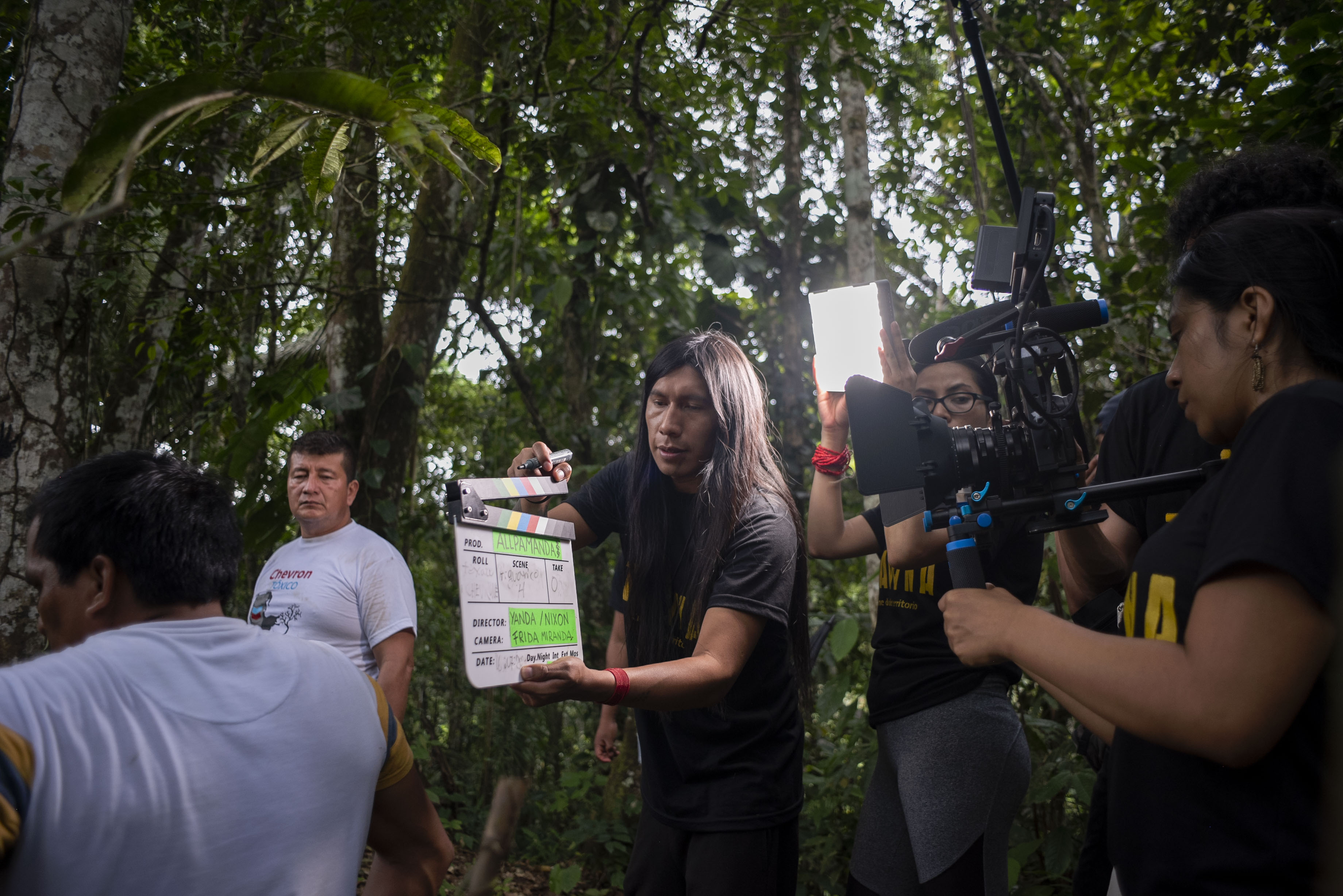
A definition of the collective
MI: We are in a process that we think is important for self-representation, because before they went to the territory, to the jungle, to the communities, and they recorded the point of view of the photographer, the director, and basically the community did not intervene to say how they wanted to be portrayed or what they did not want to be recorded. It is not the same when you take the camera and go into the community as when someone from the community or someone who has been working in the community for many years sets up their camera. It gives a very different perspective on things. So I think self-representation is very important to create little visual and audio-visual resignifications, to give a point of view.
AMGM: There is another thing that is very important to you, which is to think about the defense of territory. I think that, in a way, this has historically forced many indigenous people who work in the field to be associated with issues of activism, anti-mining resistance, anti-oil, anti-extractivism... Do you feel that maybe that becomes an imposition in terms of what you are supposed to be dealing with?
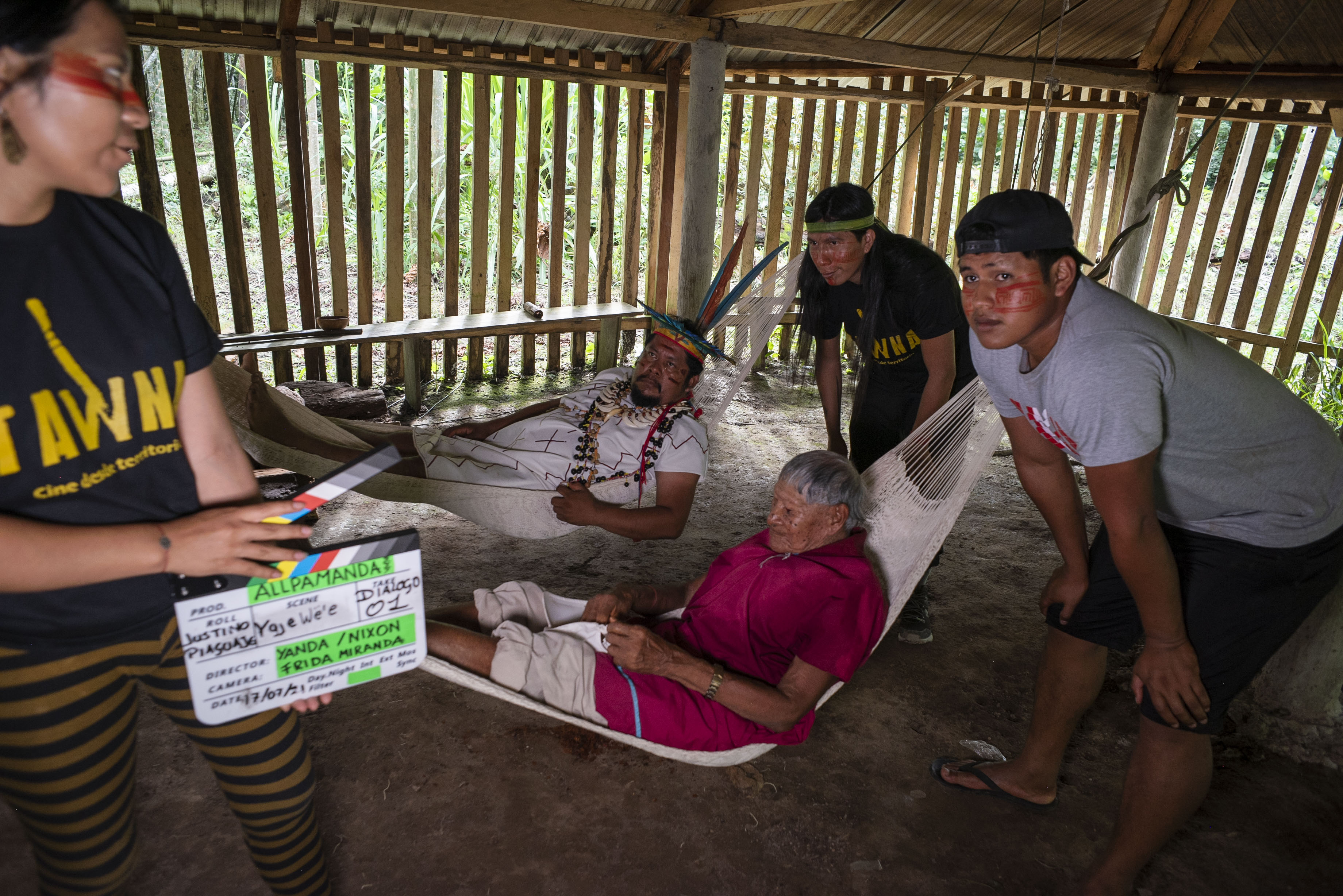
MI: Well, I think it is important to be aware first of our territories, of ourselves, of our communities, without dissociating ourselves from them, because in the end we are from there and we have to return to our territory; it is our home and we will always be linked to the defense of the territory, the question is how we use these tools to make our struggles visible. We do not feel obligated to make films about resistance or defense, but I think the political or extractive needs of the state dictate that. We also have this need as individuals to explore or express what we think or what we want to do through cinema. This has allowed us to have this richness of people who are in the collective, who also have particular views.
For example, Sani is very interested in working on the stories and legends of the Sapara, to bring them into animation so that it is much more playful and educational for children from the Sapara communities, because orality is much more fragile and loses weight over time, so bringing these elements into audiovisuals will be very important to have a living memory of who we are as a people. There are also more authorial views, perhaps like Bolo's, like mine, who are trying to explore new formats, video art, authorial video and authorial cinema; we believe it is very necessary because in the end we will be able to tell other stories, other narratives and not only those we have had to tell because of the need to defend the territory, we can also tell what we dream, what we think and what we want.
